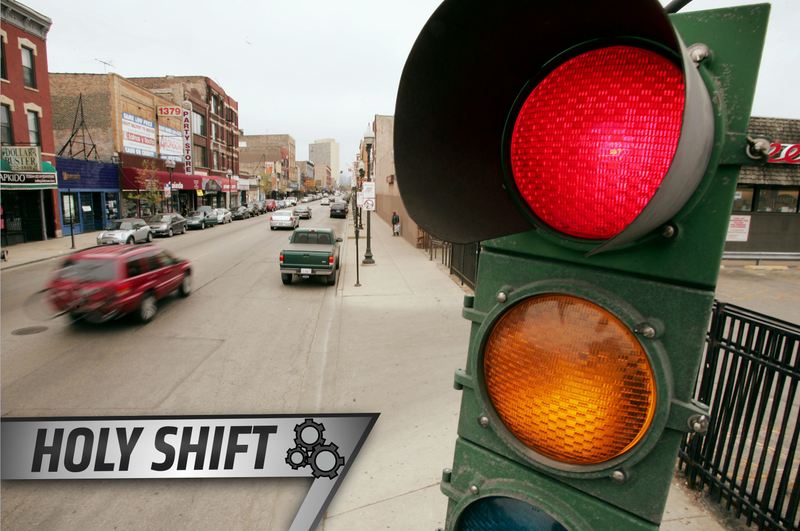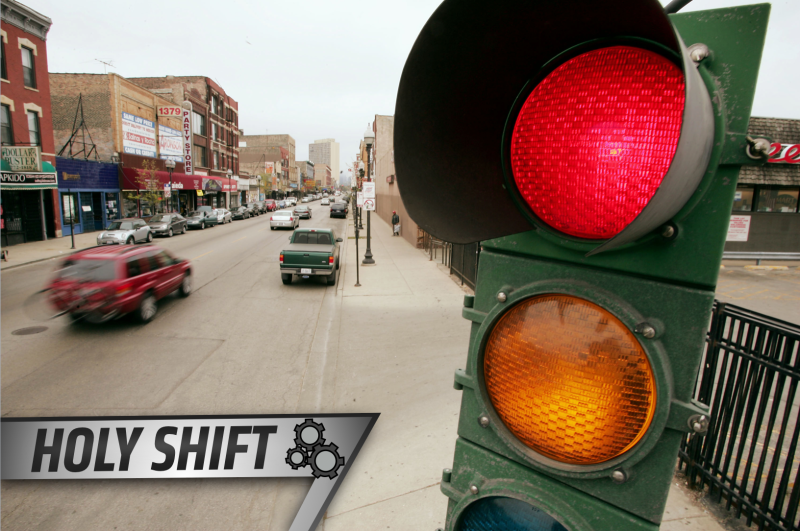
Happy Sunday! Welcome to Holy Shift, where we highlight big innovations in the auto and racing industries each week—whether they be necessary or simply for comfort.
When approaching a modern-day intersection, we as drivers don’t need much direction in order to know what to do. We simply see a color—red, yellow or green—and act accordingly. But the meanings of those colors weren’t always so universally known, and the story of how they became so is a bit of an odd one.
For the sake of simplicity, we’ll keep this post about the three common colors on traffic lights—red, yellow and green—rather than including the fancy extra signals we sometimes see these days.
Advertisement
Electric traffic signals actually had a 100-year anniversary just two years ago. According to History, the device widely accepted as world’s first electric signal to be installed went up at the intersection of Euclid Avenue and East 105th Street in Cleveland, Ohio in 1914. But that wasn’t the first attempt at a signal, and the idea had quite a few roadblocks before and after its installation. (Bad pun, yes.)
The world’s first non-electric traffic signal came nearly 50 years prior in 1868, when London adopted one near Parliament in order to make pedestrian crossing safer. As horse-drawn traffic increased in the 1800s, roads additionally needed a method by which to flow more smoothly. From the International Business Times:
Sponsored
The system installed – a semaphore – involved a tall post with moveable arms. When the arms were positioned sideways it meant stop. After dark, a gas light was lit at the top. The green tinted lens meant go, while red meant stop.
Police officers operated the signals manually and changed them in accordance with the observed traffic flow, blowing a whistle in order to warn street traffic of when the signal would change. The method was a big success in those parts, according to the book ROY G. BIV—that is, until it exploded.
The explosion came soon after its installation, resulting from a gas leak in 1869. The officer operating the light at the time sustained injuries from the incident, and London officials dropped the semaphore project soon after.
Just as the ones in London did, early signals in the U.S. had manually operated systems with red and green lights. Per the International Business Times, it was 1920—four years after the first electric system went in—when Detroit police officer William Potts introduced the three-color scheme we all know so well.
While we can only assume that earlier light colors came by the same reasoning, Potts based his color choices on railroad signals. But the original lineup for railroad signals included white, green and red, according to the book Railroad Signaling. Rather than signaling all clear as it does on the modern roads, green signaled caution while white signaled clear. Red, as it does today, meant to stop.
Advertisement
Having a white light to signal “all clear” makes perfect sense on paper—more sense than green, even. But it caused plenty of disastrous and fatal problems.
Railroad officials began to do away with the white light to signal a clear path as early as 1899, as a volume of Railroad and Locomotive Engineering from that year attributed the (lack of) color to wrecks and confusion. The red disks used to tint the lights often broke, leaving the warning to shine white—all clear—when its intention was for the train to stop altogether due to danger ahead. .
Railroad and Locomotive Engineering noted that conductors also mistook the white lights, when intended to be white, for other signals and vice versa. It’s easy to see why, too. Whereas a colored signal is unnatural against the night sky and a dark landscape, white could blend in with anything from the moon to a lantern.
For that reason, officials sought to rid the railroad industry of the white signal altogether. In doing so, green came to mean “go” and red stayed as “stop.” The railroad officials added yellow as the cautionary middle child, and conductors could understand from then on that white meant the colored disk covering the light was not in tact—therefore, proceed with caution or simply stop.
Those colors then made their way onto the roads, illuminating the 1920s traffic signal and all of its successors in some variation of red, yellow and green as the years went on. Here, nearly 100 years later, we don’t even have to think about the meanings of the three.
So, next time you need to kill a bit of time at that long stoplight in town, you won’t have to look far to find trivia material—just make sure that the driver keeps his or her eyes on the lights, too.
Thanks for the suggestion, darthjenni!
If you have suggestions for future innovations to be featured on Holy Shift—in street cars, the racing industry or whatever you’d like—feel free to send an email to the address below or leave them in the comments section. The topic range is broad, so don’t hesitate with your ideas.
Contact the author at alanis.king@jalopnik.com.











